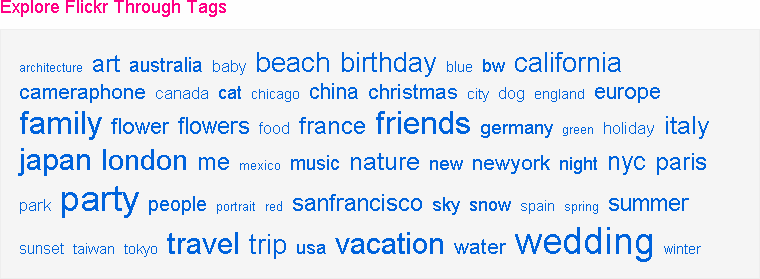TAG CLOUDS
A recent addition to navigation mechanisms is the tag cloud, which lists links alphabetically and weighted by frequency; the more frequently occurring a topic the larger it appears. This gives a snapshot into the relative significance of a topic: the larger the link, the more important it is. Although most often implemented with tags (hence the name), these mechanisms sometimes employ other types of links as well.
Tag clouds are good for dynamic content. Flickr is reported to be the first site to use the tag cloud (www.flickr.com, Figure 3-20).[48] Tags that are used more frequently are displayed in a larger font, so the cloud shows popularity of tags. (See Chapter 12 for more on tagging).
As a navigational mechanism, tag clouds have limited value. If a visitor has a known information need, for instance, a cloud of links isn't really efficient. They seem to be more of a novelty than an effective navigation mechanism. But the visual weighting of links provides valuable information: it shows at a glance what others are talking about or about the concerns of a community. Tag clouds reflect a certain zeitgeist for a site or topic.

Figure 3-20. Flickr's famous tag cloud
[48] See "Tag cloud" on Wikipedia: en.wikipedia.org/wiki/Tag_cloud.
Get Designing Web Navigation now with the O’Reilly learning platform.
O’Reilly members experience books, live events, courses curated by job role, and more from O’Reilly and nearly 200 top publishers.

